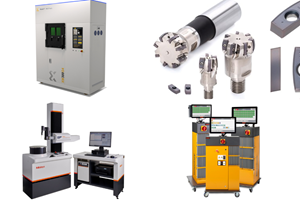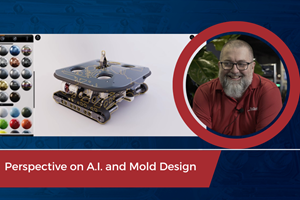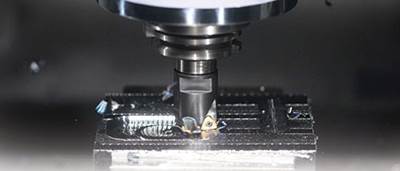Rethink Moldmaking with Digital Tool Knowledge
Connecting digitized tool data with CAD/CAM, presetting, production and automated inventory control offers real-world productivity gains.
Global manufacturing has changed how shops obtain, manage, use and share machine tool and cutting tool data. More and more, manufacturing executives are focusing on shopfloor data initiatives to drive operational and business improvements and faster time to market, and to otherwise benefit from immediate access to data from machines on the shop floor.
Moldmakers, perhaps more than most, know of the unrelenting pressure to produce. A production business is all about capability and connections. Capability—the percentage of time a machine tool asset is making parts—is the very foundation for measuring the effectiveness of a mold builder. Capability also depends on “connections,” as the lack of a cutting tool when it is needed can bring a shop’s production line to a sudden halt. Too much inventory, on the other hand, is a classic definition of waste and poor cost control.
Digitized tool applications, which typically include a catalog of tools and a tool selection function, make searching for and ordering tools easier and more efficient, but this is only the starting point. The greater goal of these platforms is to deliver shops true value and advantage through cost savings and process gains. And they do this by supplying process knowledge along with recommendations for tools and setups, as well as critical time-saving connections from CAD/CAM through inventory. Such process knowledge might include machining strategies and recommendations for tool configurations.
Real Data
The key to effective shopfloor data is digital tool knowledge. This can be gained from a single-source, on-demand system that gives shops access to the process planning information they require to improve work flow and operating efficiency. This planning information is based on data that represent real tools and how they fit, function and perform in milling, pocketing, ramping, hole making and a variety of other machining operations vital to mold manufacturing. Shops importing this data find CAD/CAM programs to be more functional and valuable because they help ensure that the tools fit and move as designed. Mold builders can save time in estimating and process planning by using digital tool applications that supply entire assemblies and spare parts lists in seconds, along with information on best-fit functionality that otherwise takes hours to assemble.
Selecting and having the right tools is important, but digital tool knowledge offers much more, automatically providing the ideal sequence of operations to produce the desired feature within specified tolerances. For example, to drill a tight-tolerance deep hole with an entry angle, digital tool data will indicate not only the drill, but also the pilot drill and the end mill needed to spot-face the inclined surface prior to drilling. Users then only need to “assemble” a holder, an adapter and the inserts, then load the virtual assembly into their CAM or other software. In addition, if this functionality is delivered on a cloud-based platform, it will remain current with the application at hand.
Digital tool knowledge also can be customized for a shop’s specific operation. For example, basic information on the shop’s machine tools, hourly costs, maximum spindle speeds and maximum torque can be entered into the system, and then the system can generate recommendations to optimize specific machine conditions. Virtual machine libraries are also possible and can be shared with multiple users.
Intelligent Inventory
Connecting digital tool knowledge with automated vending solutions offers moldmakers additional advantages, such as improved inventory control, downsized centralized tool crib operations, and reduced time for machine operators to locate tools, and capture and compare tooling costs associated with the produced part. This data also can help shops identify problem areas and opportunities for continuous improvement, including reducing tooling purchases, minimizing the time required to tool up for a new job and eliminating costly overnight shipments.
Today’s high-tech vending solutions can be easily and quickly configured to meet unique user requirements, offering drawer sizes to accommodate a large variety of items and access control via username, password, biometric identification, card readers or a combination of these options. The latest in vending software provides a complete audit trail that enables tracking of personnel who use a component stored in the system, as well as when, where and why the component was used.
When digital tool knowledge is linked to automated vending, mold shops are able to quickly identify the optimal tool and all of its components, and assess corresponding tool availability. This linkage will also ease the process for ordering new tools. Ideally, all shopfloor machines should be connected to a single tooling database available for any Windows-based device that allows users to request a price quote from their technology suppliers.
Not only do traditional fragmented approaches take more time, but they require high levels of skill in the areas of tool selection, application and data integration. Digital tool knowledge connected to automated vending allows users to see if an item proposed for a process plan is already available in their inventory, making both plans and budgets more efficient.
Related Content
Products and Services for Multiple Moldmaking Needs
New year, new technology roundup! Featured here is a collection of product offerings, from profile milling cutters to industry-specific CAD/CAM software to innovative hot work tool steels.
Read MoreTolerancing in Mold Design, Part 2: Using GD&T to Address Conventional Tolerancing Issues
Mold designers can achieve a single interpretation of workpiece functionality when following the American Society of Mechanical Engineers Geometric Dimensioning and Tolerancing standard.
Read MoreVIDEO: Perspective on A.I. and Mold Design
Bill Genc of TopSolid shares his perspective on the benefits of and barriers to using artificial intelligence in mold design.
Read MoreWhat is Scientific Maintenance? Part 2
Part two of this three-part series explains specific data that toolrooms must collect, analyze and use to truly advance to a scientific maintenance culture where you can measure real data and drive decisions.
Read MoreRead Next
Finding the Right High-Feed Indexable Milling Tool
The value of versatility and reliability in your high-feed machining solution.
Read MoreWhy Not Me?
Check out this video highlighting students, educators, people in manufacturing and business leaders who are committed and passionate about manufacturing education and career opportunities ... and who are simply asking, "Why Not You?"
Read MoreHow to Use Continuing Education to Remain Competitive in Moldmaking
Continued training helps moldmakers make tooling decisions and properly use the latest cutting tool to efficiently machine high-quality molds.
Read More












.jpg;maxWidth=300;quality=90)








